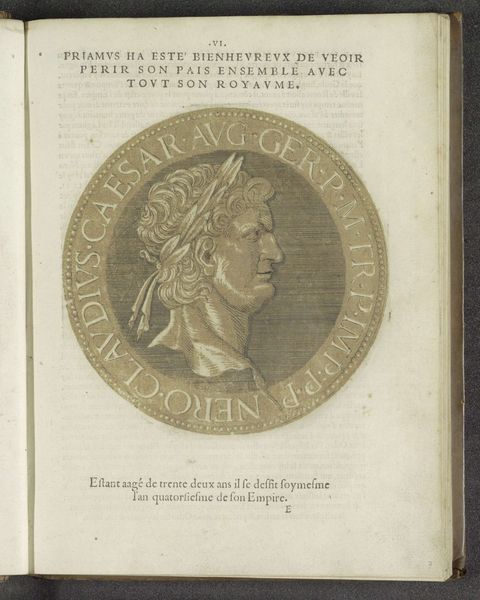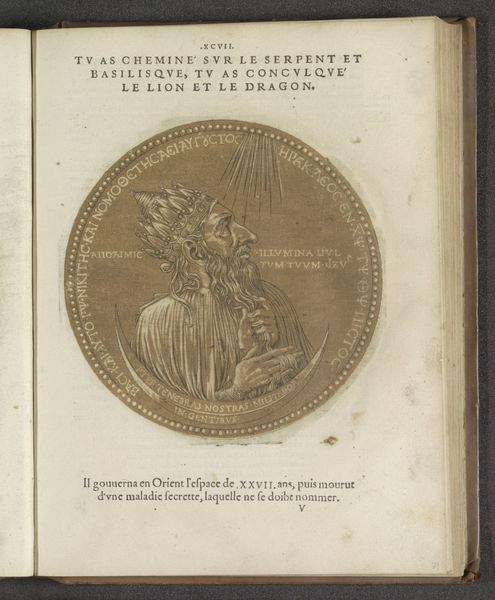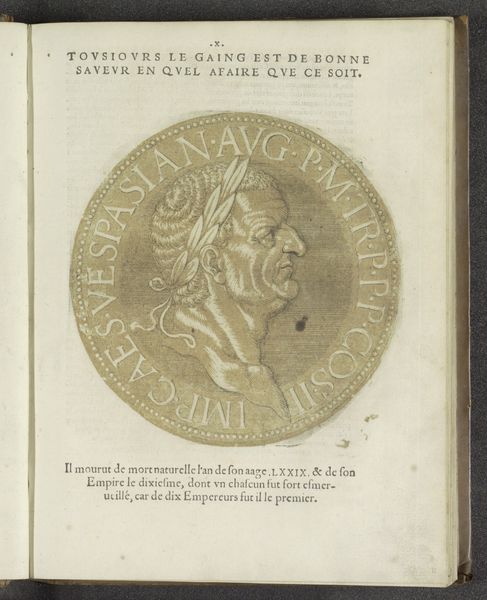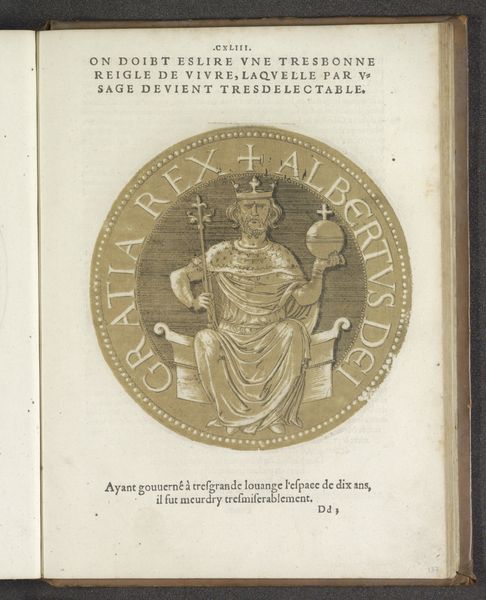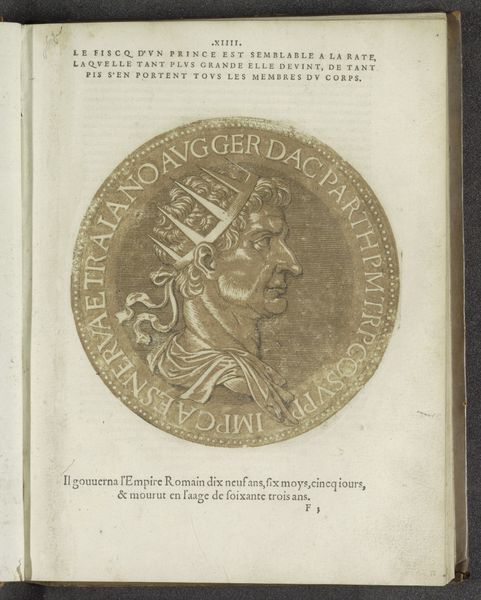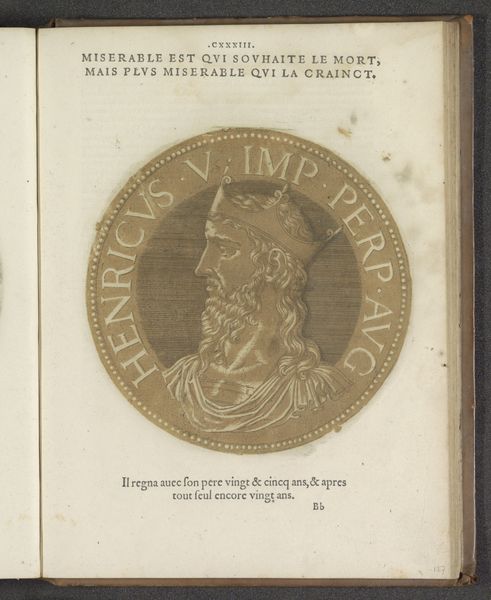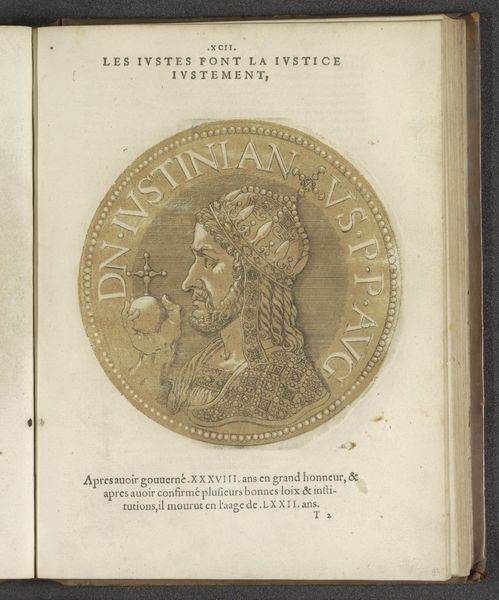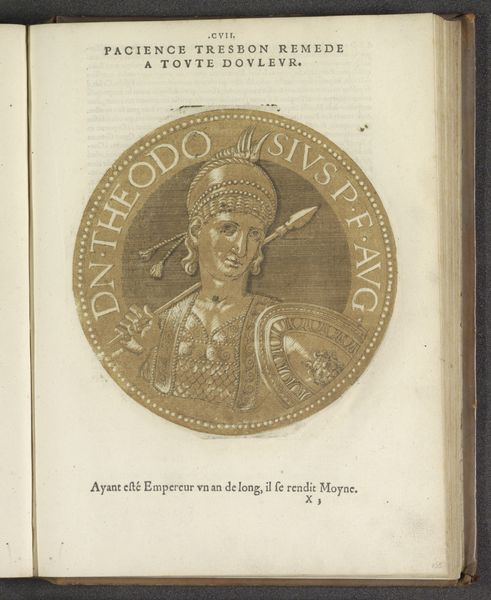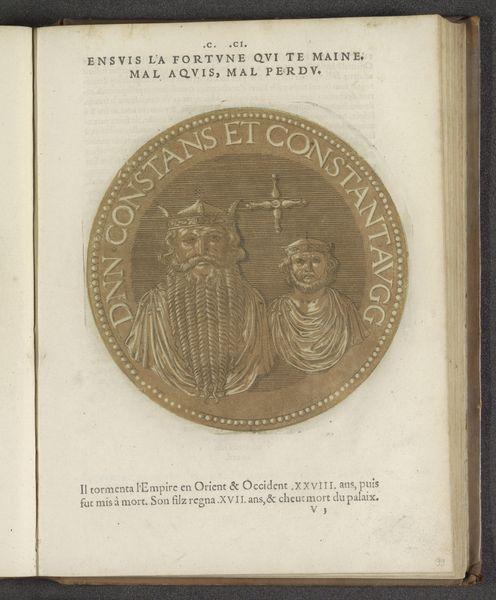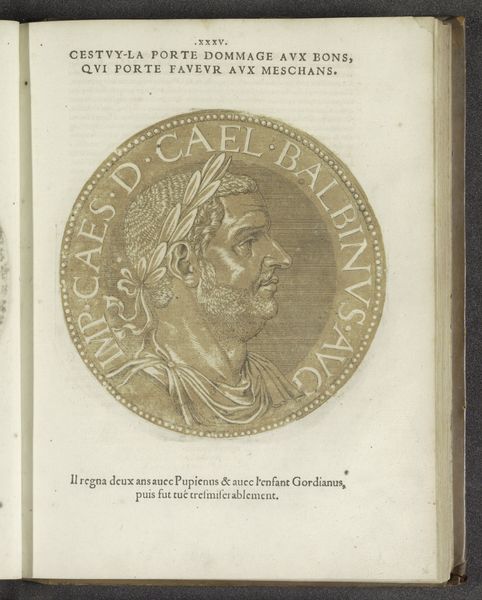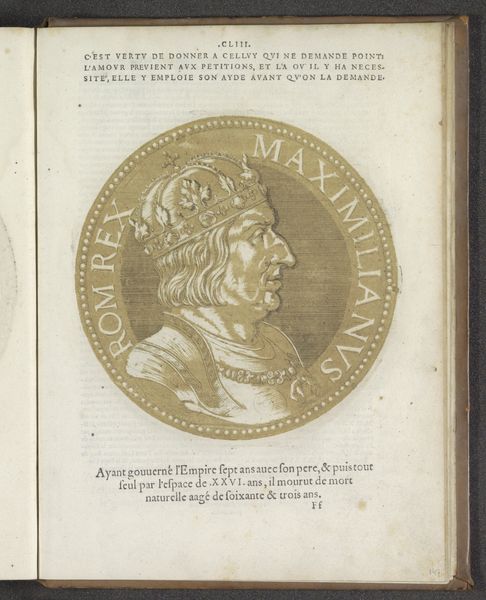
print, engraving
#
portrait
# print
#
11_renaissance
#
coloured pencil
#
history-painting
#
engraving
Dimensions: height 180 mm, width 180 mm
Copyright: Rijks Museum: Open Domain
Curator: So here we have Joos Gietleughen's 1557 engraving, "Portret van keizer Didius Julianus." Editor: It’s fascinating how this portrait of a Roman Emperor is presented almost as if it’s on a coin. The lines are so precise and elegant for an engraving from the Renaissance! How do you interpret this work? Curator: It’s crucial to remember the Renaissance’s obsession with classical antiquity, particularly ancient Rome. Beyond aesthetic admiration, these portraits served as political tools, drawing parallels between contemporary rulers and the perceived grandeur of Roman emperors. What does it mean to selectively adopt figures from the past and to showcase them according to one's own agendas? Editor: I hadn't considered that. It's almost like the Renaissance was trying to legitimize itself by association. Do you think the artist was making a statement about power by choosing to depict Didius Julianus specifically? I know he had a very short reign. Curator: Precisely! The choice isn’t accidental. Didius Julianus came to power through bribery, a detail certainly known at the time. This print then, becomes a commentary, doesn’t it? Consider the questions it implicitly raises about legitimate rule, the seductive corruption of power, and the moral responsibilities of leadership in any era. The French text at the bottom reads "He bought his death with the Empire, which he governed for only seven months," a stark warning. Editor: Wow, that context really changes my understanding of the piece. It’s no longer just a historical portrait; it’s a political statement! Curator: Exactly! These prints circulated widely, making these ideas accessible. History paintings often taught moral lessons. I wonder what lessons they hoped to convey through Didius Julianus’s depiction. Editor: It's eye-opening how much history and political commentary can be embedded within what seems like a simple portrait. Thanks! Curator: Absolutely! It highlights the ongoing dialogue between past and present, art and power.
Comments
No comments
Be the first to comment and join the conversation on the ultimate creative platform.

